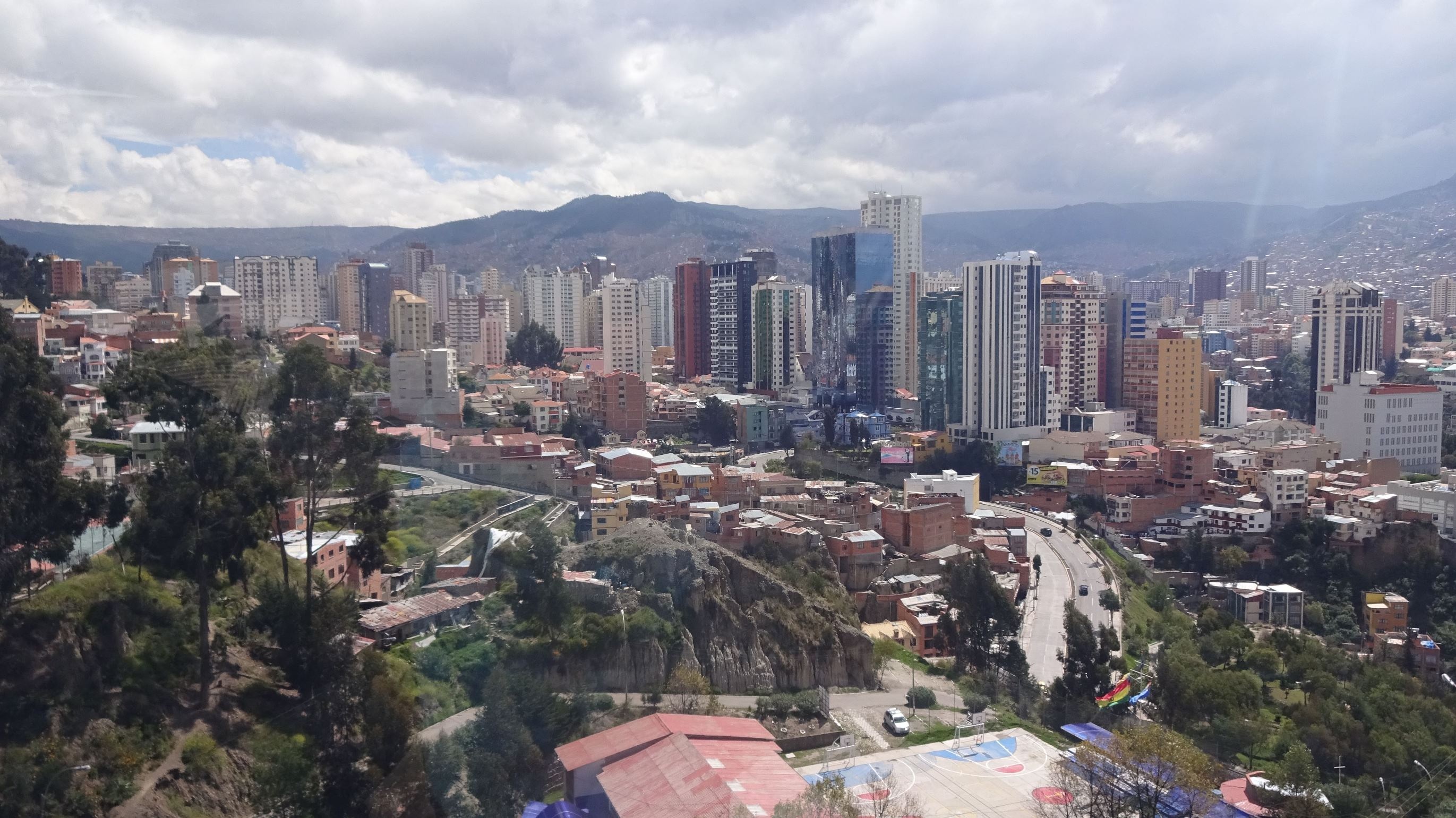WEEK 4 - COMPULSORY EXERCISE: HEAT ISLAND EFFECT
FC-02x Livable Future Cities (1st Run) - Compulsory Exercise 2

Uploaded on 2015-10-16 by Allurbano
Q.2 There is no public information available for La Paz city and its suburban and rural areas in relation to UHI effects. However, it was possible to compare temperature differences of La Paz city with other municipalities located in the countryside through information provided by the Weather Channel and Accuweather. Such differences ranges between 5C to 10C. The first issue to consider before doing an analysis of UHI in La Paz is that due to its high altitude (between 3.100 and 4.000 meters above sea level), the city and its surroundings experience important temperature variations in a single day (i.e. between 18 C and 4 C). Furthermore, La Paz city is located in a huge geographical depression (first picture), which helps to protect it from constant winds and low temperatures from the Altiplano (second picture). In my opinion, a study of UHI effect in La Paz will be very challenging due to the above-mentioned conditions as well as the differences between the dry and humid seasons. ![enter image description here][1] ![enter image description here][2] [1]: https://edxuploads.s3.amazonaws.com/14450081034515324.jpg [2]: https://edxuploads.s3.amazonaws.com/144500823678322.jpg Q3. One of the first measures I would take is to organize a massive campaign directed especially to children and young people to make them aware of the issues related to UHI effects, climate change and risk management. Another key set of measures would be establishing different types of incentives to create green roofs atop city buildings, painting some facades and structures with light colors, foster urban agriculture using the Incas techniques (i.e. through terraces), and increasing substantially the amount of native trees and plants in the city´s main streets. Q4. No much. The problem in La Paz in particular as well as in Bolivia in general, is that there are other urgent needs to solve prior to the UHI effects.